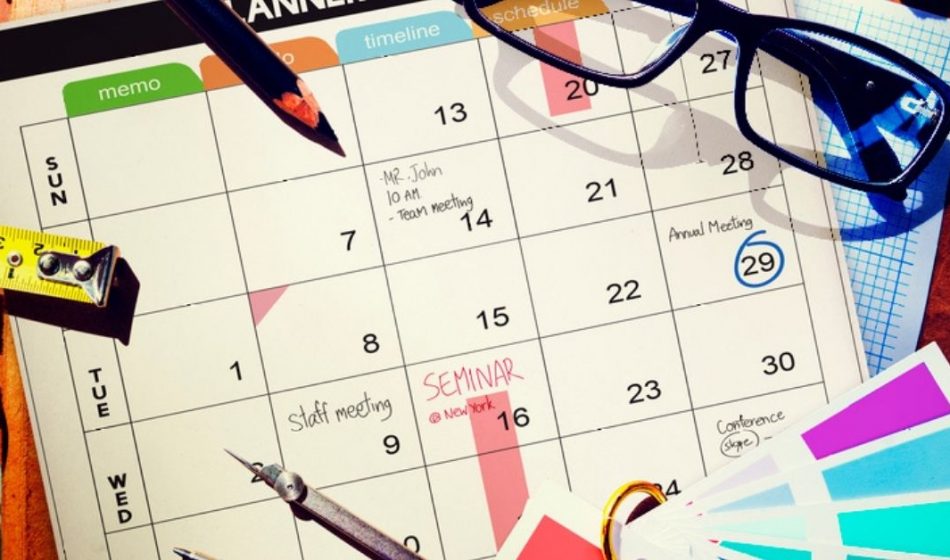

5 Ways to Stay Organized and Create a System That Works
For those who I have not had the pleasure of meeting yet, I’m Rachel Franciosa, Client Success Coordinator here at Mahoney Performance Institute. A large part of my role is coordinating our client engagements and scheduling our consultants accordingly. Consider me your go-to for any questions you have about getting started with Mahoney Performance Institute or your upcoming engagement.
To do this successfully, I need to stay extremely organized and in-tune with our team to better understand their needs and their bandwidth.
In this article, I’m sharing five things that help me stay organized in my day-to-day work. I hope you find these tips helpful in creating your own system.
Open Communication
How many times have we heard that “communication is key” – probably more times than we can count. But there’s truth to the saying. I’ve found that open communication and more specifically, collaboration, has been a pillar for me to stay organized at work.
At Mahoney Performance Institute, we’ve built this into our system through weekly “collaboration” meetings. These are short one-on-one meetings that are touch bases to address things that have come up during the week and keep track of progress made on longer projects. This collaboration fosters open communication on our team as we’re consistently checking in with each other. And not only that, we’re talking through our agenda versus communicating over email which helps to not only build rapport, but also ensures that we’re leaving the conversation on the same page and with our respective action items. If you’re looking for a good read, this article from the Harvard Business Review outlines how to get the most out of collaboration at work while avoiding burn out.
Visual Organization
Your physical space is usually a good representation of what you have going on internally. This is true both at work and at home. To stay organized, I like to use a color-coding system for everything from our shared calendar to project checklists and invoicing processes. This allows me to look at something quickly and know exactly where it should go. Because of the fast-paced nature of our business, often when team members are looking for updates, it’s best when I can respond quickly rather than having to dig through documents to see where we left off. A color-coding system can also be helpful to see immediately where you are in the “big picture” or overall scope of a project. This can make it easier to identify problems and may signal that you’re not progressing at the speed in which you planned to.
The point here is that by creating your own visual organization system, your workspace (whether at home or in the office) will foster more creativity and productivity. When you’re not worried about where an item goes and having to clean up a mess, your mind can focus on the task at hand.
Common Platform
A big component of our system here at Mahoney Performance Institute is the tools that we use to track projects and collaborate between meetings.
While communication and collaboration are a big part of how I stay organized, it takes time. We rely on Basecamp to collaborate between meetings, without talking. At any point, we can check on the status of a project without having to waste the time of a team member.
A crucial component to using these types of collaboration tools successfully is to have a shared understanding of how to use them and the processes to follow. For example, in our case, knowing the triggers for creating a new Basecamp project and the criteria for a project to be considered complete requires the team to be on the same page so our records are correct. Language matters here, too. Having established naming conventions and shared language across business units ensures that any team member can log on and find the information they’re looking for in one quick search.
Regardless of the project management system you use, explore ways you can create systems and templates so as you get busy, you can stay organized and not reinvent the wheel.
Multiple Checkpoints
Another way I’ve stayed organized is by creating multiple checkpoints. The projects I’m putting in Basecamp are the forward-facing to-do’s. Behind the scenes, I have a handful of other lists that I work off of to make sure that all of the to-do’s for a deliverable are accounted for. For me this looks like:
- Working lists for each colleague – This is what I bring to a collaboration meeting. I’ll add tasks that come out of those meetings to this list and use it to prep ahead of my next collaboration with a colleague to make sure I’ve done what I committed to the last time we talked.
- My “one-stop-shop” – Basecamp is great for keeping track of the tasks associated with projects, but I also have a “master document” that keeps track of all the engagements we have going at any one time. I call this my “one-stop-shop.” If someone were to ask me a question about the status on an engagement, I can at a high-level look and share the status.
These checkpoints will look different depending on your organization, industry, and role. I share this to prompt you to think about the different areas of your role that you need to prioritize and organize.
Technology and Automation
How can you use technology and automation to stay organized? In my role, I lean on our CRM system and scheduling tools to track activities and automate as much as possible. This helps me stay organized because it takes less time and is all tracked in the tools that I’m using versus having to manually search for scheduling information or prior communications with a person. Again, this will vary based on your role, but regardless of what you’re in charge of overseeing, I’m sure there are opportunities to lean on technology to help you stay organized.
Key Takeaways
Systematize as much as possible
Any time you can be proactive instead of reactive is a win. By creating and implementing your own systems, you’ll be able to look out and get a better handle on your workload. Plus, you’ll reduce your stress by knowing exactly what it is you should be working on.
As I’ve become more organized at work, I’ve noticed a lot of the systems I’ve created have translated to my home life, too. A win-win!
Use whatever works for you (within reason)
As long as you’re sharing information with your colleagues appropriately, use whatever system works for you to get your work done. I’m a pen and paper person and like to take notes during meetings. That works for me. Some of my colleagues like to bypass taking notes and put their tasks in our project management tool. That works for them. Whatever system works for you, use it, as long as it’s within reason and you’re committed to following the organization’s system for documenting shared information.
Step Away When You Need To
It’s easy to get lost in the details when getting organized and creating a system. When you feel yourself sweating the small stuff, take a step back and gain perspective. Get a colleague’s opinion, work on something else – anything you can do so you can return to the task later with fresh eyes.
Your Performance Partner
At Mahoney Performance Institute, we empower leaders to reach and exceed their goals at work and in life.
Being proactive and creating your personal organization system will help you to show up more confidently at work, knowing that you’re tracking your activity and are on top of what is in your queue.
The team at Mahoney Performance Institute offers expertise and customization based on your organization size and industry to help you accomplish your goals. Get in touch today to learn more!
